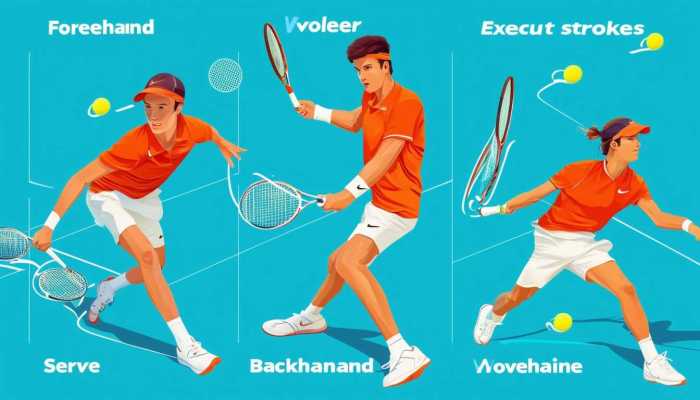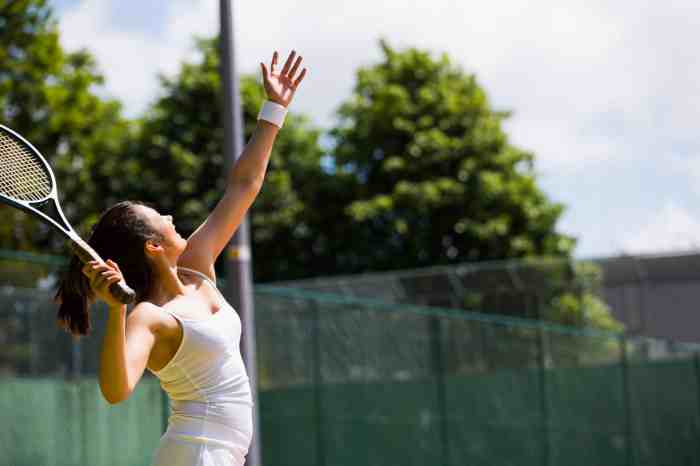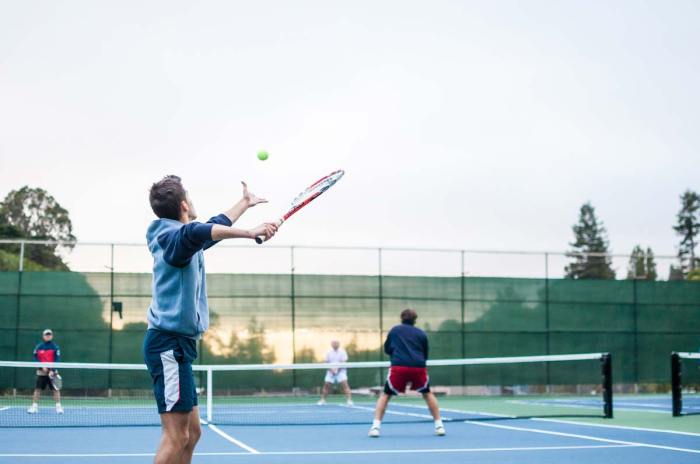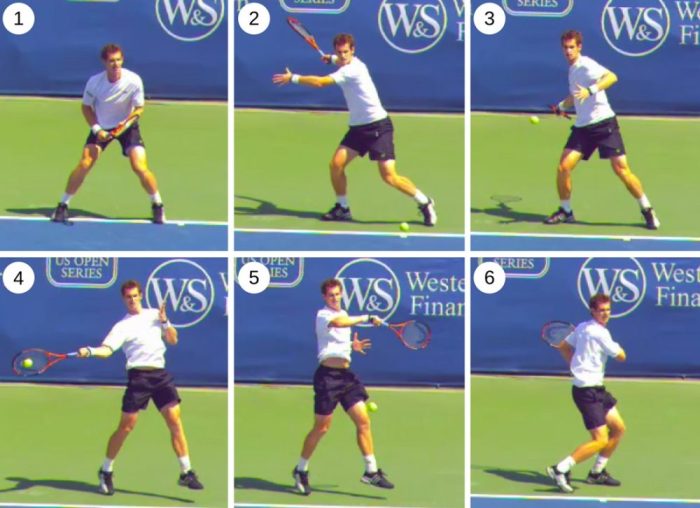Embark on your tennis journey with How to Play Tennis: 5 Basic Tennis Strokes, delving into the essential techniques that form the foundation of this beloved sport.
Learn about the key strokes that every tennis player should master, setting the stage for an exciting and rewarding experience on the court.
Basic Tennis Strokes

Tennis involves five fundamental strokes that players use to control the ball and outmaneuver their opponents on the court. Each stroke serves a specific purpose and requires different techniques to execute effectively.
Forehand
The forehand stroke is performed on the player’s dominant side and is usually the most powerful shot in a player’s arsenal. Players use the forehand to hit balls on their dominant side with topspin or flat trajectory, allowing for aggressive shots down the line or cross-court.
Backhand
The backhand stroke is executed on the non-dominant side of the player and can be performed with a one-handed or two-handed grip. Players use the backhand to return shots on their non-dominant side, allowing for versatility in their shot selection and defensive play.
Serve
The serve is the only stroke in tennis that is initiated by the player, starting each point of the match. Players use the serve to begin the point with an advantage, aiming to hit the ball with power and accuracy to start the point offensively.
Volley
The volley is a quick and decisive stroke that is performed near the net, requiring players to hit the ball before it bounces on their side of the court. Players use the volley to end points quickly and take control of the net, putting pressure on their opponents to hit difficult passing shots.
Overhead Smash
The overhead smash is a powerful stroke that players use to hit high balls out of the air, typically when they are close to the net. Players execute the overhead smash with an overhead motion, aiming to hit the ball with force and accuracy to end points decisively.
Forehand Stroke

The forehand stroke is one of the fundamental shots in tennis and mastering the proper technique is crucial for success on the court.
Proper Grip and Stance
- To execute a forehand stroke, start by gripping the racket with your dominant hand in an Eastern forehand grip. This means your base knuckle on your index finger should be on the third bevel of the racket handle.
- Position your feet parallel to the baseline, shoulder-width apart, with your non-dominant side facing the net.
Step-by-Step Execution
- Prepare for the shot by turning your shoulders sideways, bringing the racket back behind your body.
- As the ball approaches, step forward with your front foot and rotate your hips and shoulders to face the net.
- Swing the racket forward in a smooth motion, making contact with the ball in front of your body.
- Follow through the shot, extending your arm towards the target and finishing over your opposite shoulder.
Common Mistakes
- Hitting the ball too late, causing shots to lack power and accuracy.
- Over-rotating the body, leading to inconsistencies in shot placement.
- Gripping the racket too tightly, resulting in a loss of control and touch on the ball.
Backhand Stroke

The backhand stroke is an essential part of a tennis player’s arsenal, allowing for versatility and control in various situations on the court.
Single-Handed vs. Double-Handed Backhand Stroke
When comparing a single-handed backhand to a double-handed backhand stroke, the key difference lies in the grip and execution. A single-handed backhand offers more reach and finesse, while a double-handed backhand provides additional power and stability. Players often choose based on personal preference and playing style.
Importance of Footwork in Backhand Stroke
Effective footwork is crucial in executing a powerful backhand stroke. Proper positioning and balance help generate momentum and transfer energy from the ground up through the shot. By using quick, small steps and pivoting on the back foot, players can optimize their backhand technique for maximum impact.
Generating Topspin on Backhand Stroke
To generate topspin when hitting a backhand stroke, players should focus on brushing up the back of the ball with a slightly closed racket face. This motion creates the necessary spin to control the trajectory of the shot and bring the ball down into the court. Additionally, snapping the wrist at contact and following through high can enhance the spin and accuracy of the backhand stroke.
Final Wrap-Up

In conclusion, mastering these basic tennis strokes is the gateway to elevating your game and enjoying the thrill of competitive play. Dive into practice, hone your skills, and unleash your full potential on the tennis court.